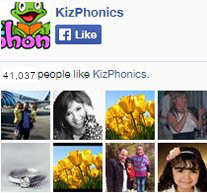The Enchanting World of Time for Bed Stories with Phonics
The world of bedtime stories is rich with tales of adventure, wonder, and magic. For generations, these narratives have served as a comforting ritual for children, transporting them to dreamy realms just before they drift into sleep. But what if this treasured story time could be an avenue for learning as well? Enter the captivating world of bedtime stories for phonics.
The Marriage of Story Time and Phonics
A bedtime story enriched with phonics is not your average tale. It's a narrative that cleverly integrates phonetic elements, weaving them into the story's fabric. While the little listeners are entranced by the plot, they are also subconsciously imbibing the foundational sounds of the language. In essence, bed storytime becomes a dual experience: a journey of imagination and a lesson in phonics.
Why Phonics in a Bedtime Story?
For many children, the moments before sleep, often labeled as "bed storytime", represent a period of unparalleled receptivity. Their minds, though winding down, are like sponges, absorbing the sounds, words, and patterns they hear. By infusing phonics into a bedtime story, you're leveraging this mental state, making learning organic, effortless, and incredibly fun.
Advantages of Bedtime Stories for Phonics
Promoting Language Skills: As children listen to phonics-rich stories, they internalize the sounds, enhancing their speech and language comprehension.
Nurturing Bonding Moments: Bedtime stories are intimate. They provide an opportunity for caregivers and children to bond, and when phonics is introduced, this bonding moment becomes a shared learning experience.
Setting the Stage for Reading: Phonics is a cornerstone of reading. Introducing it during bedtime stories lays a solid foundation for future reading adventures.
Boosting Cognitive Abilities: The fusion of imagination and phonics exercises the brain, enhancing memory and cognitive abilities.
Selecting the Perfect Phonics Bedtime Tale
The quest begins by finding age-appropriate stories. For toddlers and younger kids, stories with repetitive sounds or rhymes are ideal. As they grow, tales with more intricate phonetic structures can be introduced. The primary goal is to ensure that the story grips their attention while subtly imparting phonics lessons.
A goldmine of such resources is the Kizphonics collection of phonics stories. Additionally, to elevate the experience, their phonics readers offer a plethora of engaging materials tailored for phonics learning.
Facts and FAQs: Diving Deeper into Bedtime Phonics
1. Why infuse phonics into a bedtime story?
By embedding phonics into bedtime narratives, children can effortlessly grasp the association of sounds with letters, fostering an early love for reading.
2. Can I craft my own bedtime phonics story?
Certainly! If you're familiar with phonics basics, you can conjure personalized tales that resonate with your child, making the learning experience even more special.
3. Where can I find books tailored for bedtime phonics?
Numerous publishers focus on phonics-driven books. A great starting point would be the treasure trove of resources on Kizphonics, where they've curated a selection of stories and readers specifically designed for phonics education.
4. How regularly should I engage in phonics story time?
The more, the merrier! A daily ritual would be ideal, but even a few nights a week can produce significant benefits.
To conclude, bedtime stories have forever been a vessel of dreams, wonder, and bonding. But when phonics enters the picture, these tales morph into powerful educational tools, nurturing a child's language skills one story at a time. So, the next time you whisper a "time for bed story" into your child's ear, remember, you're not just spinning a tale; you're crafting a future reader.










